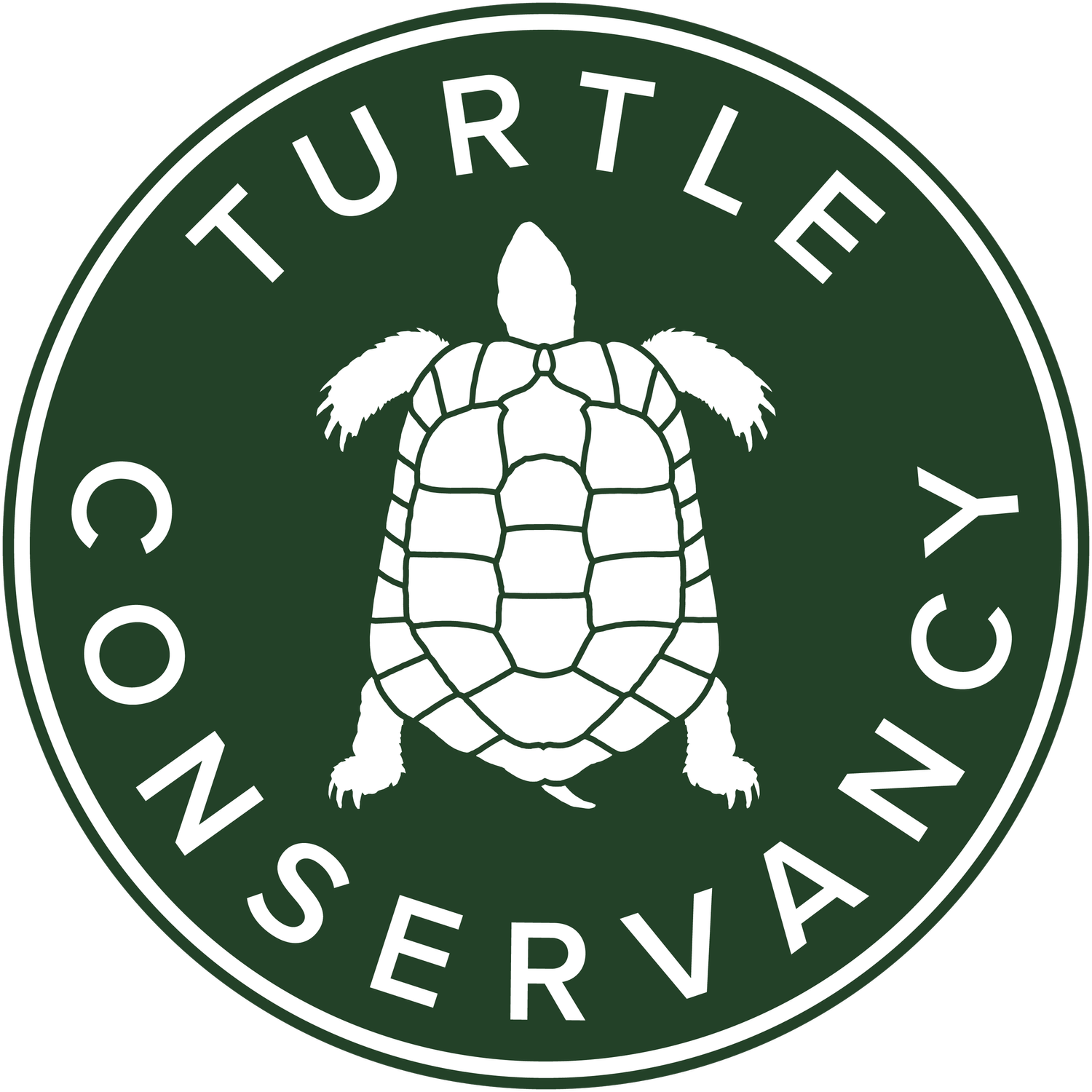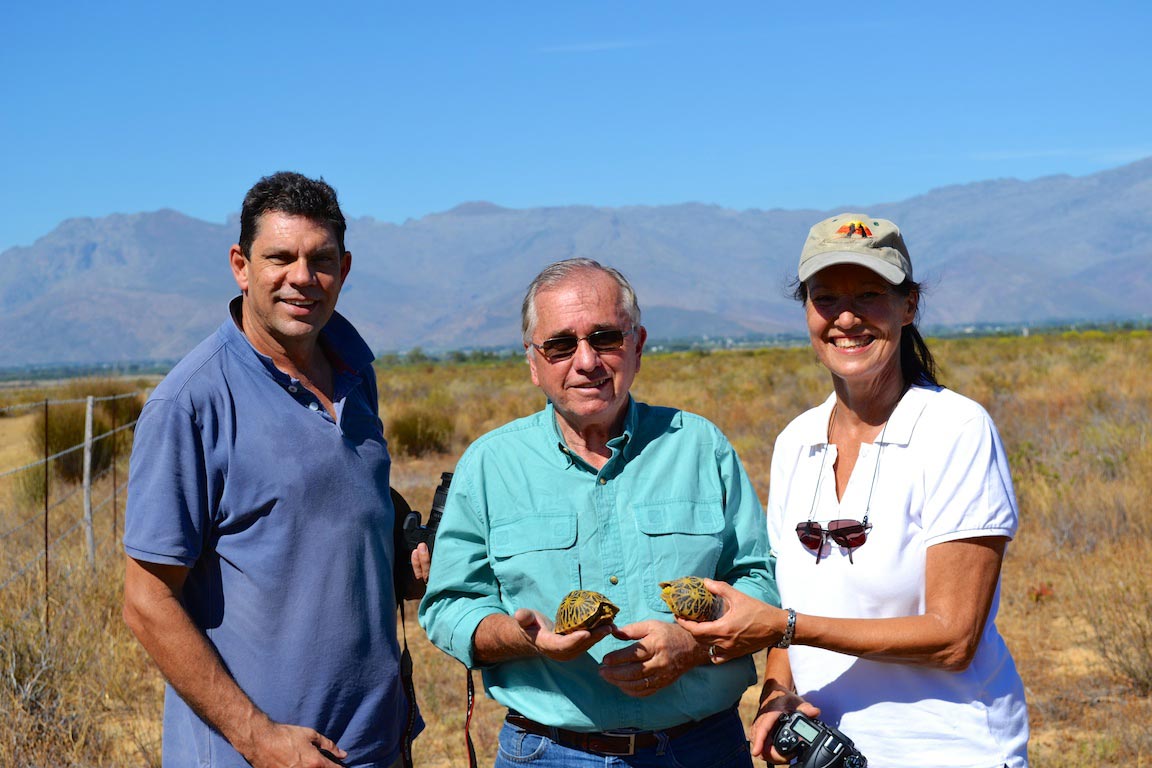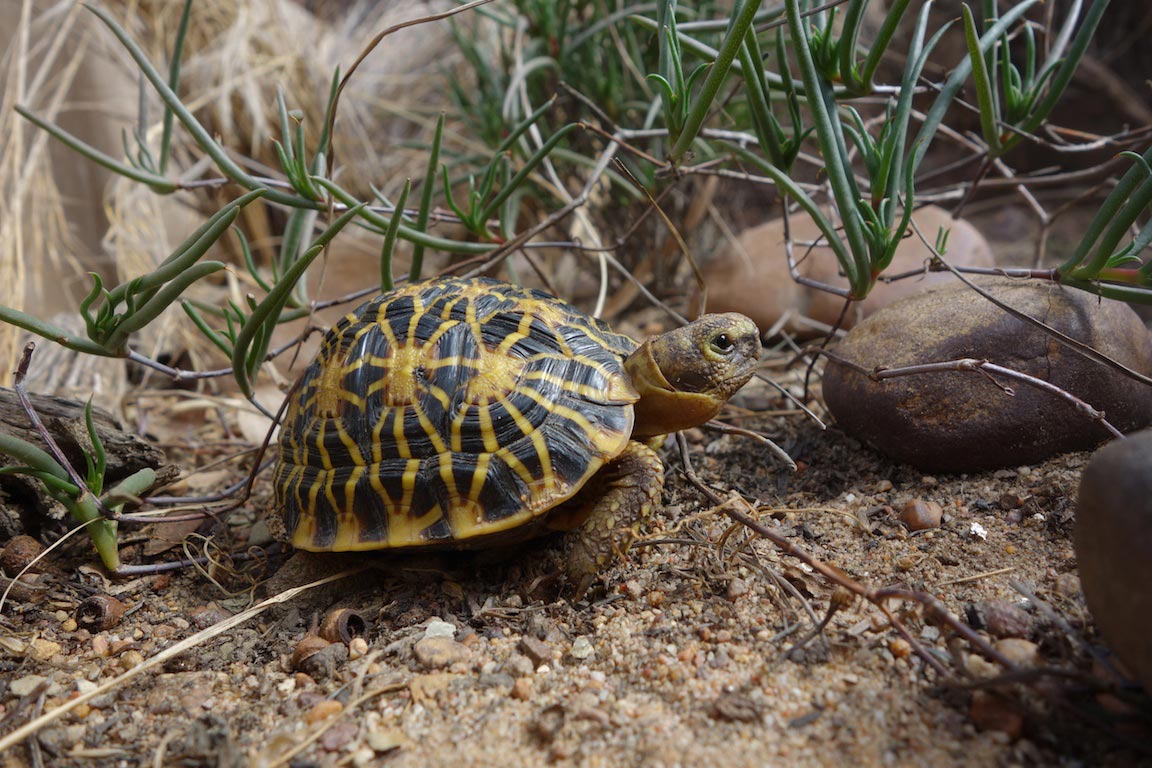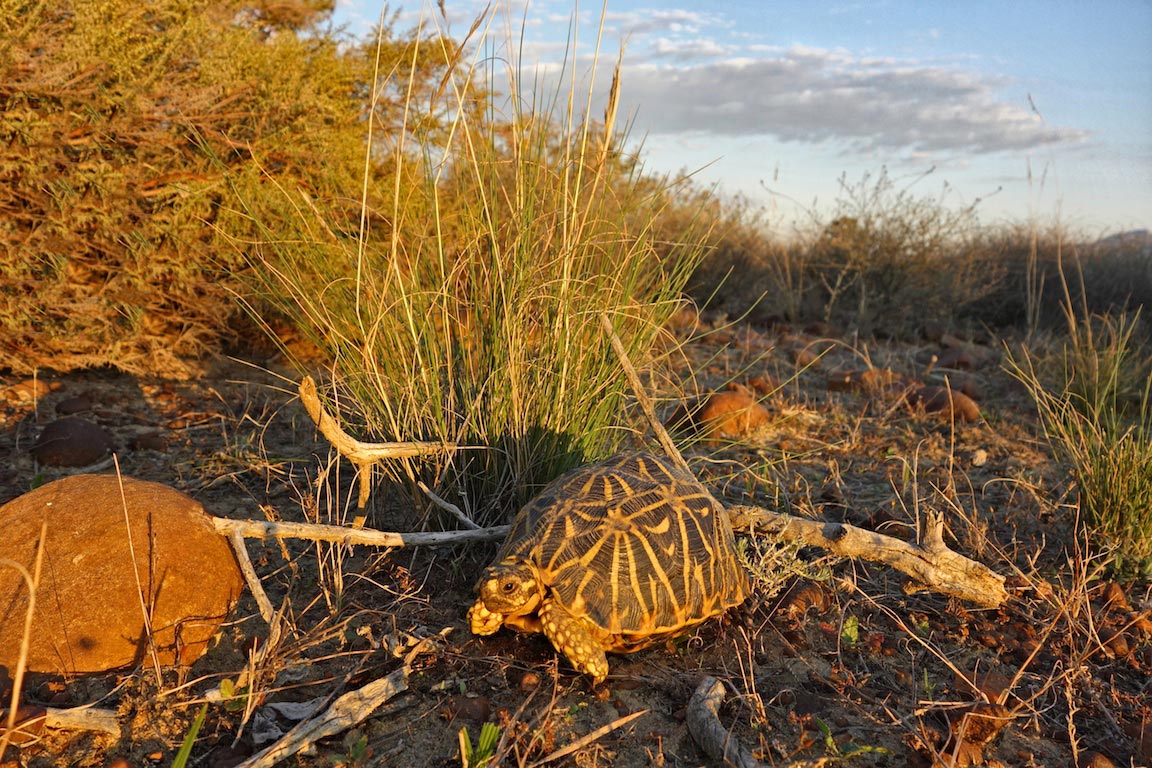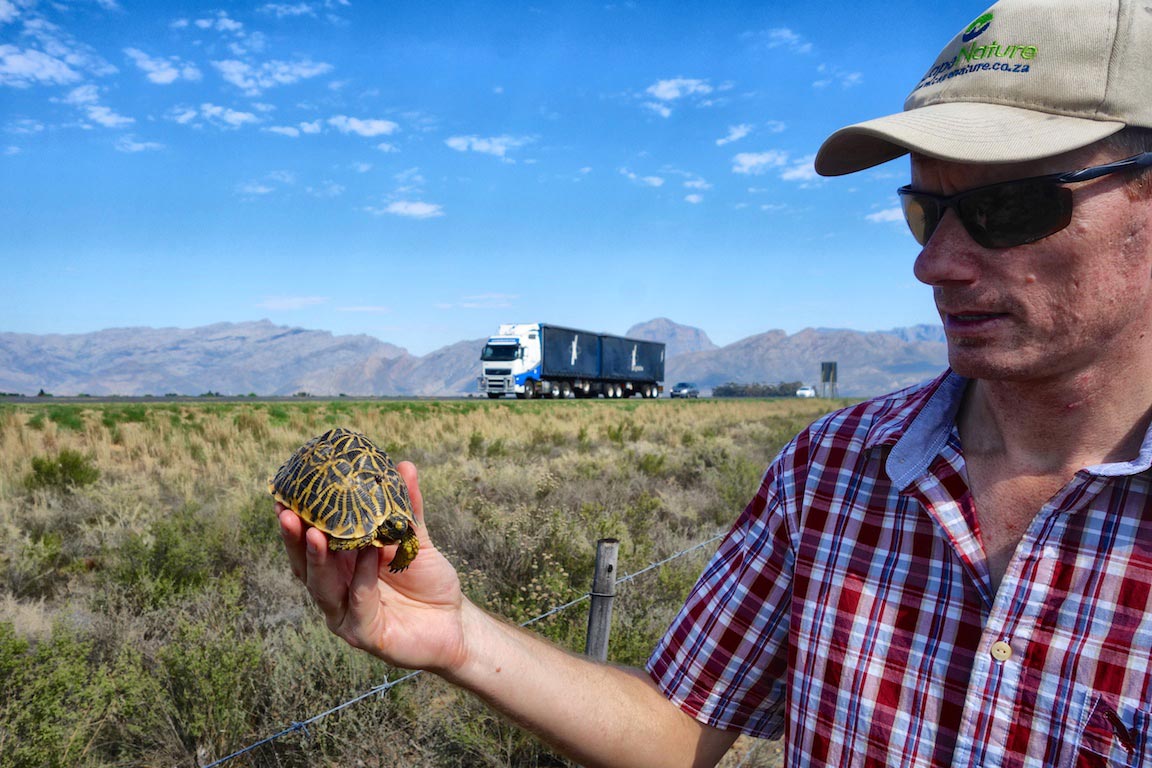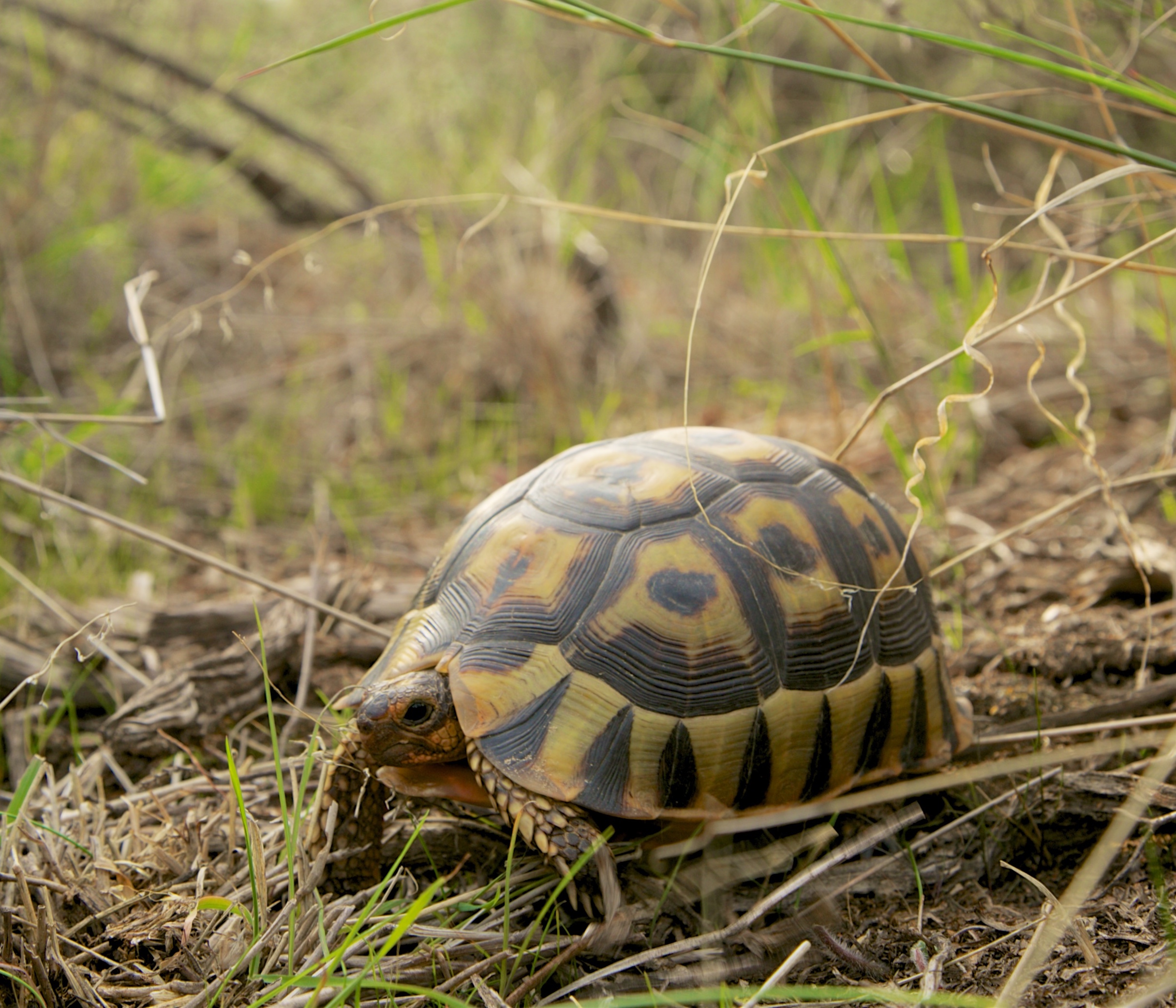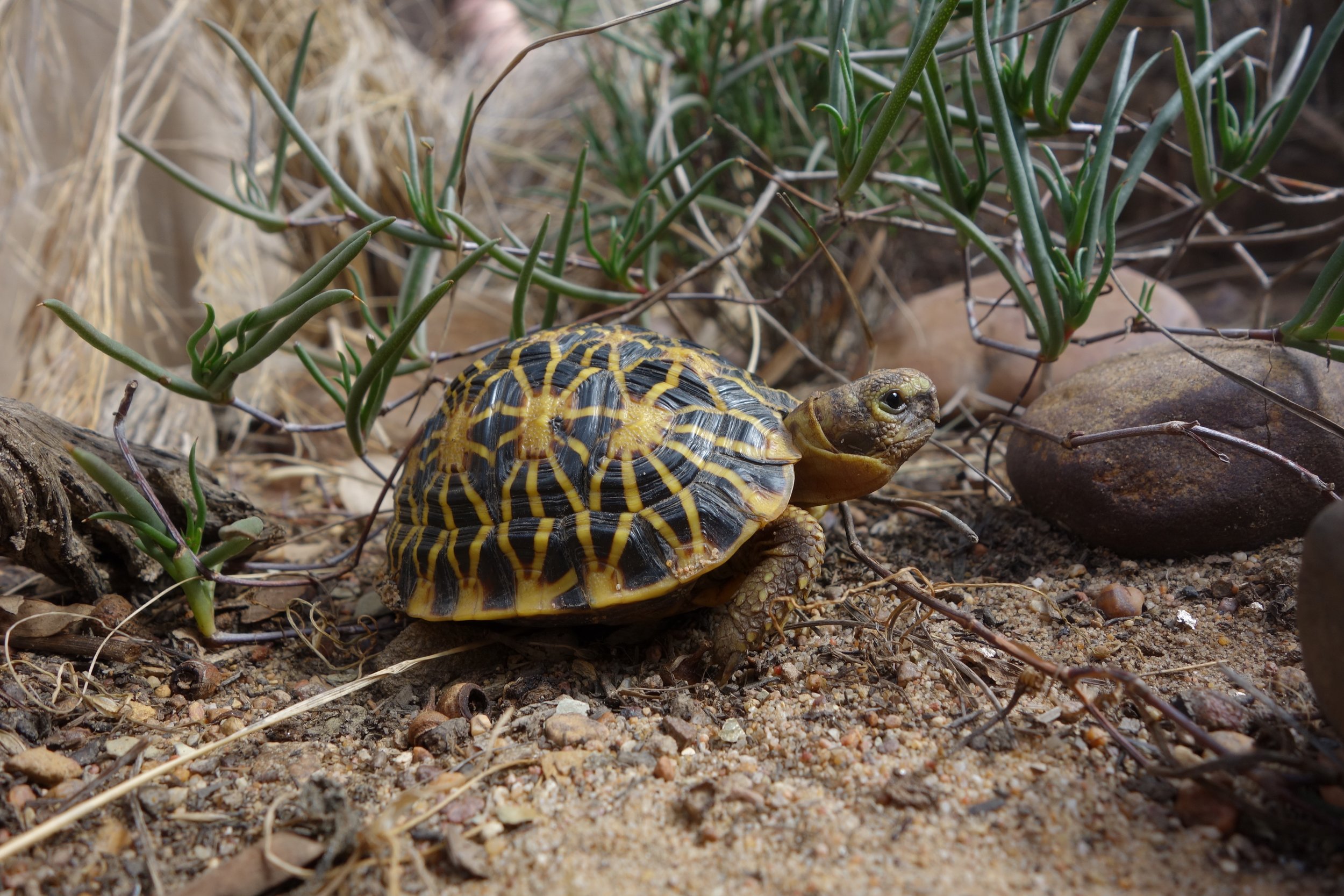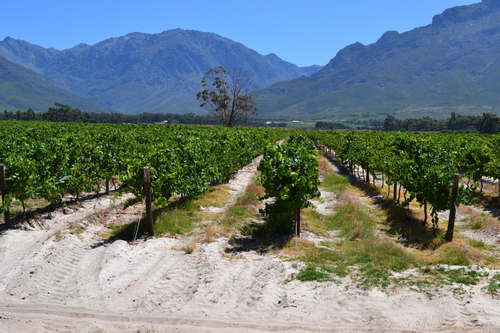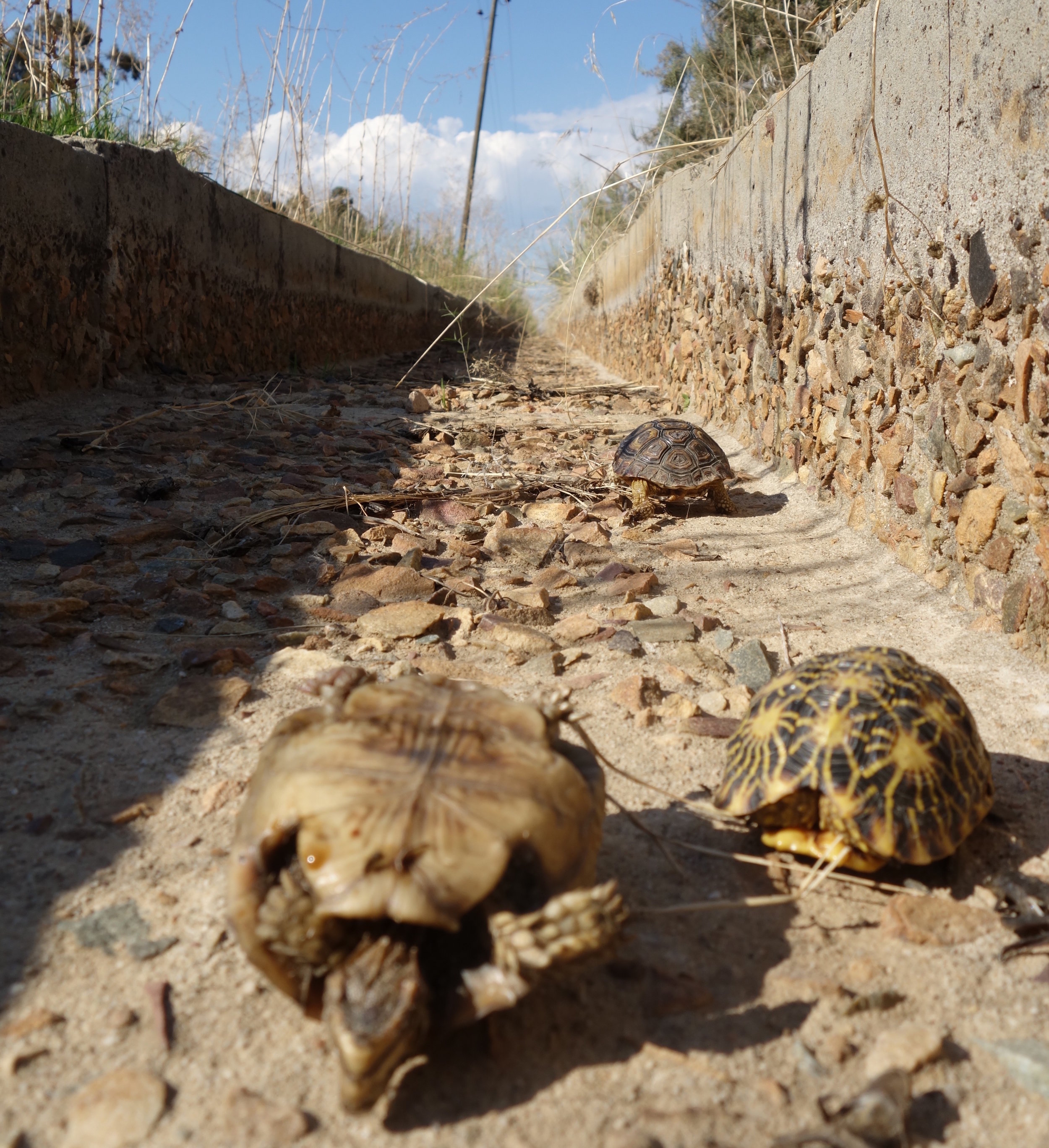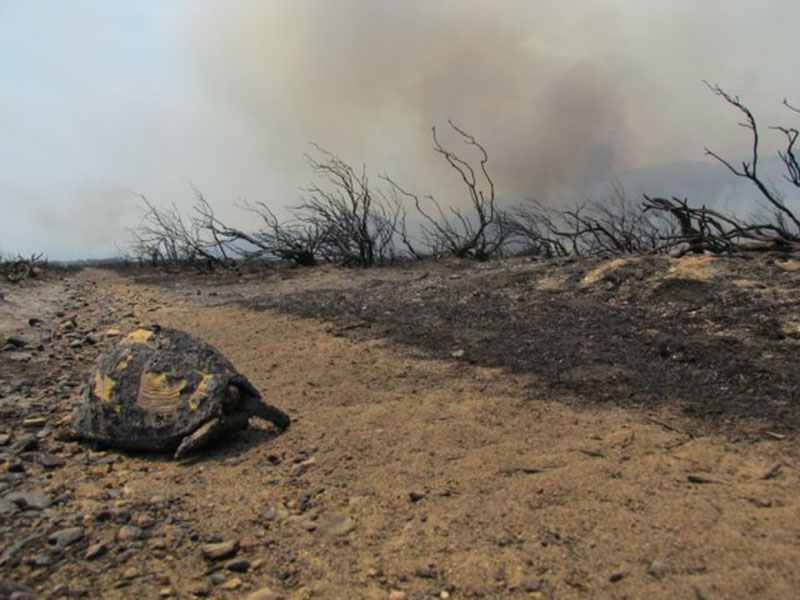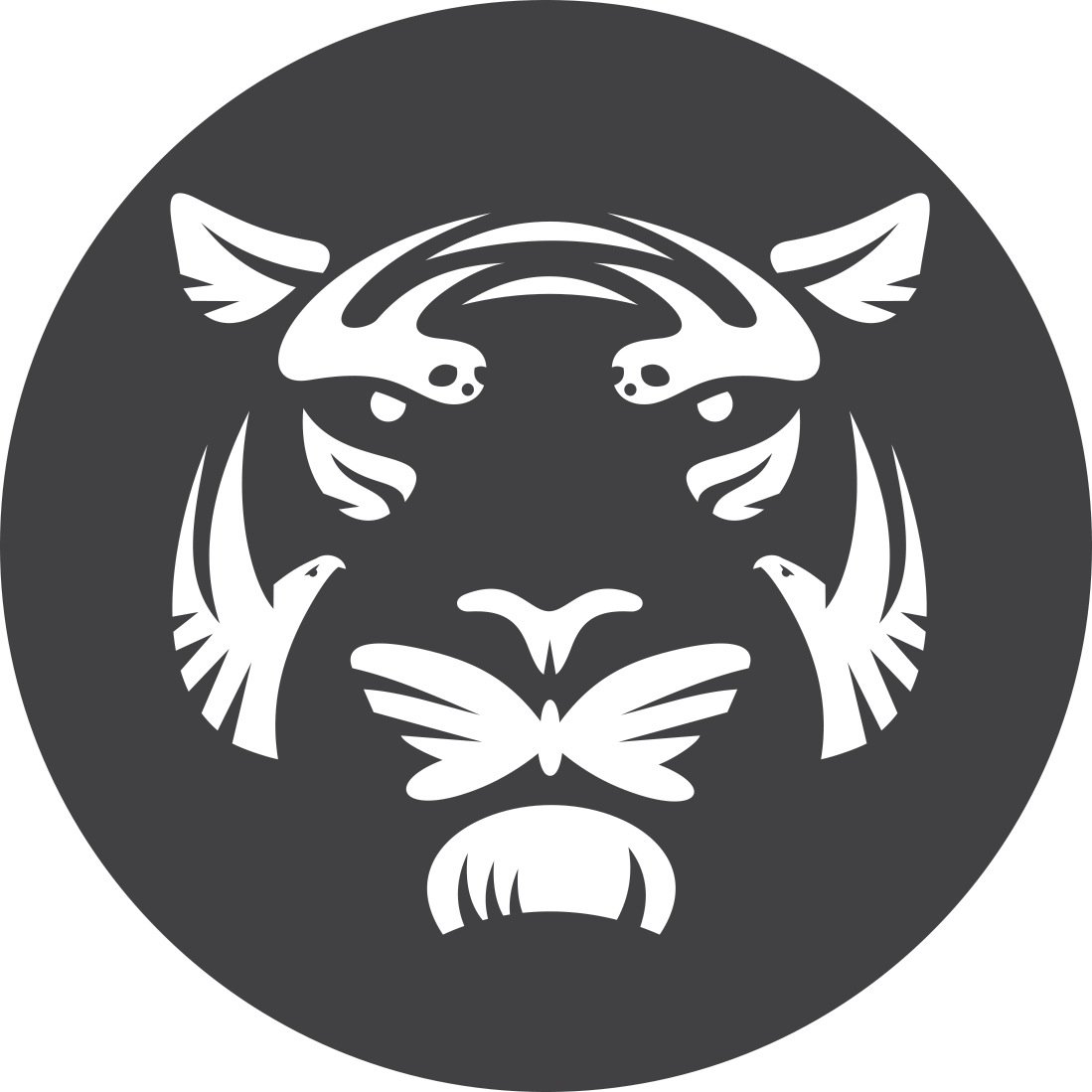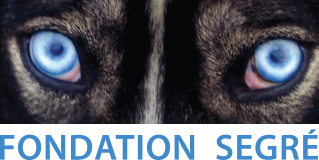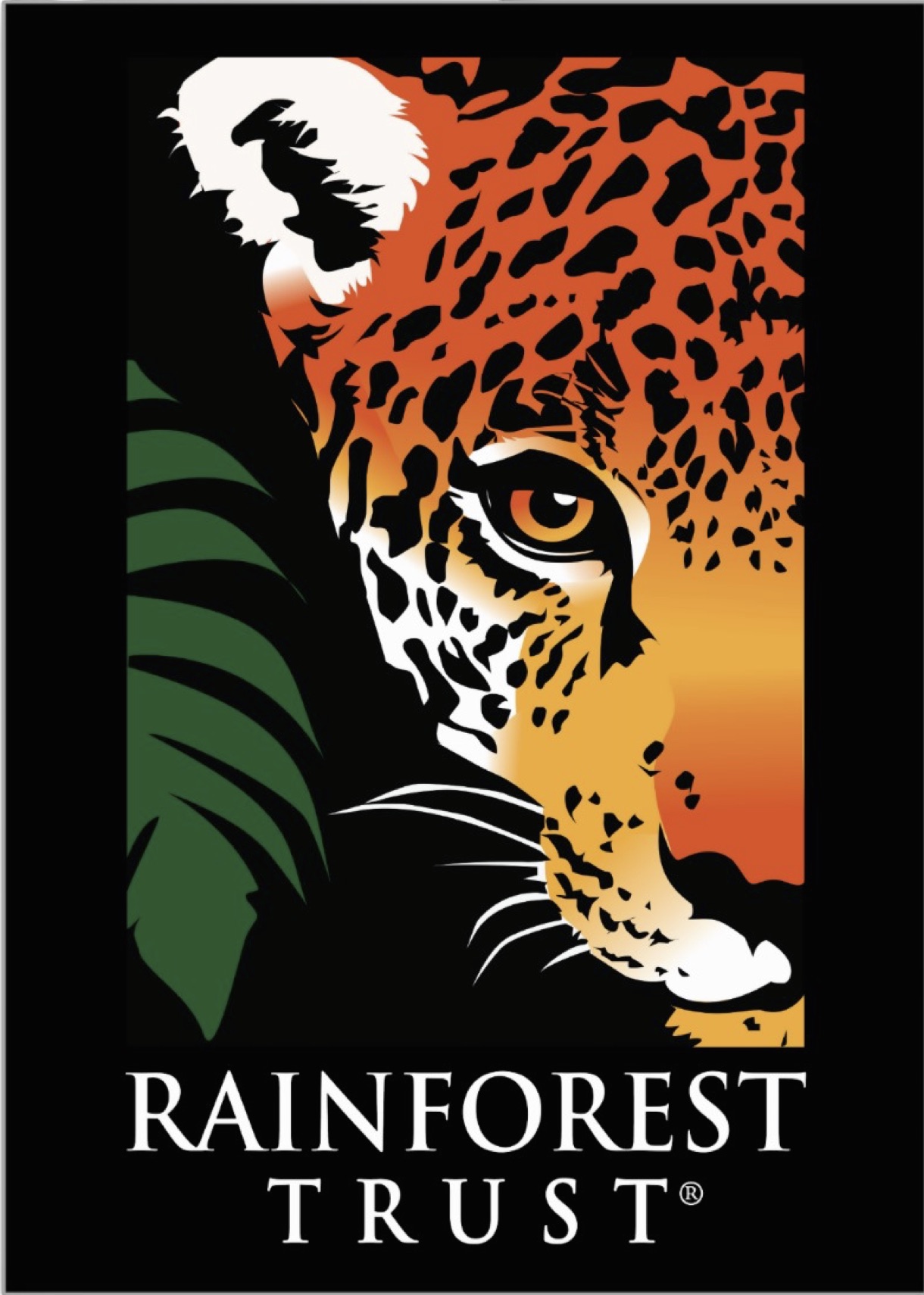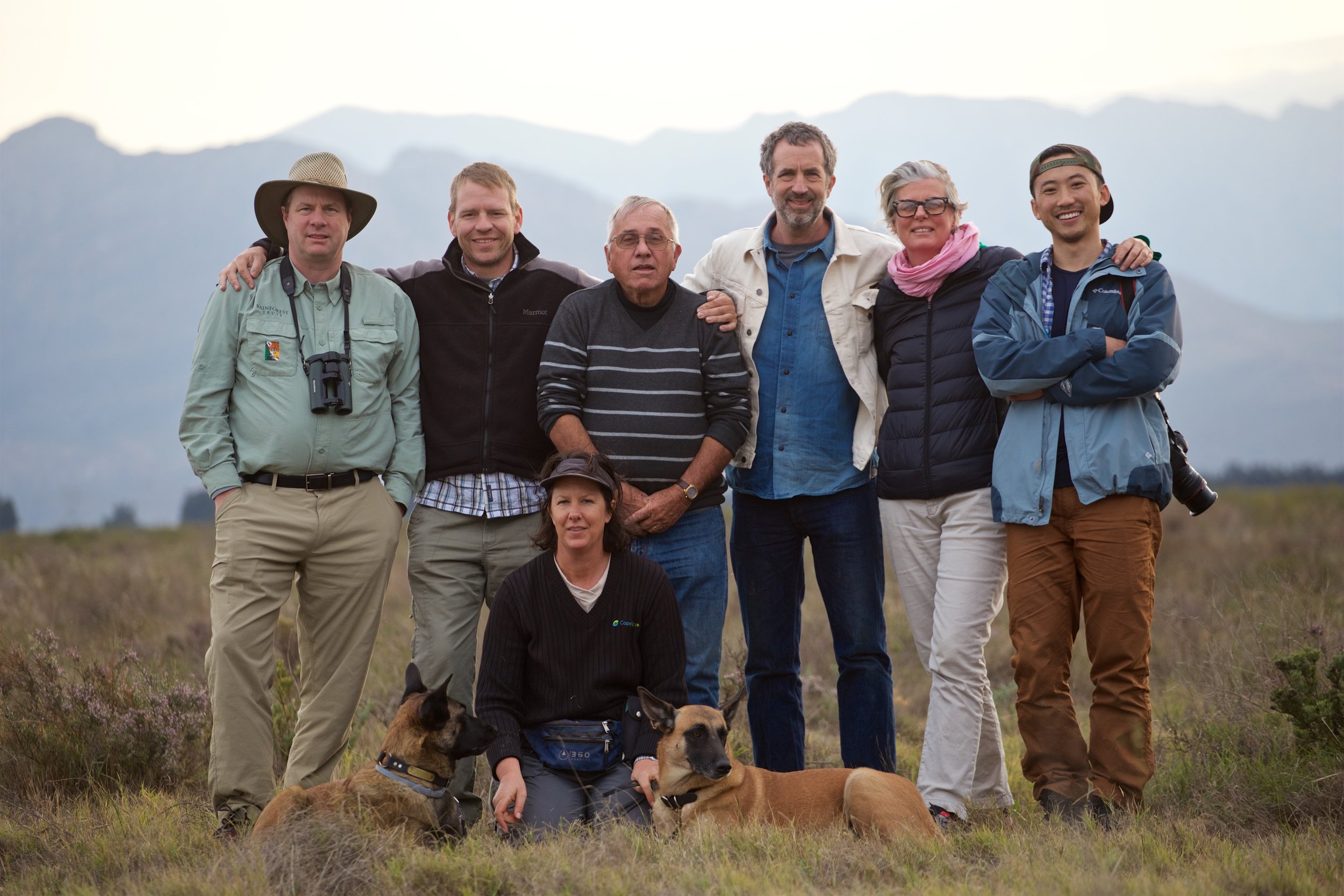Geometric Tortoise Preserve
The diminutive Geometric Tortoise (Psammobates geometricus) is one of the world's most beautiful chelonians with its domed carapace and stunning egg-yolk and black radiating pattern. It is the Fabergé Egg of the tortoise world. Fully grown, it reaches only five to six inches.
In South Africa, the Turtle Conservancy, along with its partner organizations, has purchased over 865 acres of the last remaining habitat for this critically endangered tortoise, which we are calling the Geometric Tortoise Preserve. We need to preserve this critical habitat to save this beautiful tortoise from extinction.
